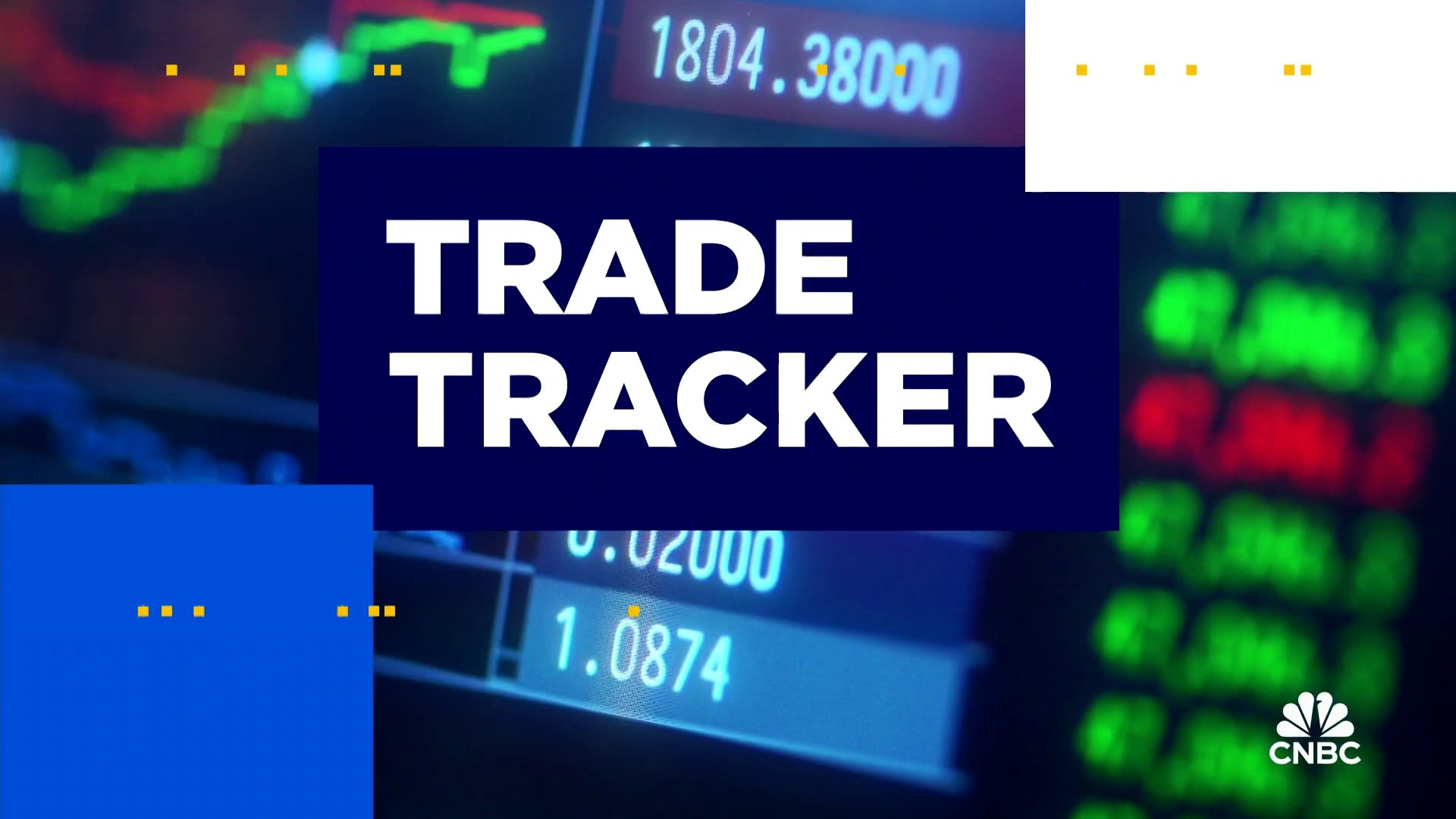Month: January 2025

MMS • RSS

From the shell, you can embed API calls in select statements. This allows you to experiment with operations before adding them to calls from your code. The shell lets you build collections, add items, and experiment with CRUD operations. Other operations apply filters and support queries, as well as building indexes across one or more fields in a collection. You can find a lengthy list of documented API functions in the project wiki, grouped into common sets of operations.
For now, the GitHub wiki is the main source of documentation for DocumentDB. It’s a little on the thin side and could do with more examples. However, DocumentDB is currently intended for developers who want an alternative to MongoDB, one that’s available with an open source license rather than a source-available license. For now, as there’s no SDK, you’ll need to build your own calls to the API. These are based on MongoDB, so porting applications shouldn’t be too complex.
Why this? Why now?
The reasoning behind the DocumentDB project seems to be the big ambition to deliver a standard NoSQL API and engine, much like that developed for SQL. Microsoft has a lot of experience working in standards bodies, especially building and delivering the essential tests needed to make sure that any implementation of the resulting standard meets the necessary requirements.

MMS • RSS

From the shell, you can embed API calls in select statements. This allows you to experiment with operations before adding them to calls from your code. The shell lets you build collections, add items, and experiment with CRUD operations. Other operations apply filters and support queries, as well as building indexes across one or more fields in a collection. You can find a lengthy list of documented API functions in the project wiki, grouped into common sets of operations.
For now, the GitHub wiki is the main source of documentation for DocumentDB. It’s a little on the thin side and could do with more examples. However, DocumentDB is currently intended for developers who want an alternative to MongoDB, one that’s available with an open source license rather than a source-available license. For now, as there’s no SDK, you’ll need to build your own calls to the API. These are based on MongoDB, so porting applications shouldn’t be too complex.
Why this? Why now?
The reasoning behind the DocumentDB project seems to be the big ambition to deliver a standard NoSQL API and engine, much like that developed for SQL. Microsoft has a lot of experience working in standards bodies, especially building and delivering the essential tests needed to make sure that any implementation of the resulting standard meets the necessary requirements.

MMS • RSS

Kevin Simpson, Capital Wealth Planning founder and CIO, joins CNBC’s “Halftime Report” to detail his latest portfolio moves.
03:17
Thu, Jan 30 20251:22 PM EST

MMS • RSS

Kevin Simpson, Capital Wealth Planning founder and CIO, joins CNBC’s “Halftime Report” to detail his latest portfolio moves.
03:17
Thu, Jan 30 20251:22 PM EST

MMS • RSS

Artificial intelligence is the greatest investment opportunity of our lifetime. The time to invest in groundbreaking AI is now, and this stock is a steal!
The whispers are turning into roars.
Artificial intelligence isn’t science fiction anymore.
It’s the revolution reshaping every industry on the planet.
From driverless cars to medical breakthroughs, AI is on the cusp of a global explosion, and savvy investors stand to reap the rewards.
Here’s why this is the prime moment to jump on the AI bandwagon:
Exponential Growth on the Horizon: Forget linear growth – AI is poised for a hockey stick trajectory.
Imagine every sector, from healthcare to finance, infused with superhuman intelligence.
We’re talking disease prediction, hyper-personalized marketing, and automated logistics that streamline everything.
This isn’t a maybe – it’s an inevitability.
Early investors will be the ones positioned to ride the wave of this technological tsunami.
Ground Floor Opportunity: Remember the early days of the internet?
Those who saw the potential of tech giants back then are sitting pretty today.
AI is at a similar inflection point.
We’re not talking about established players – we’re talking about nimble startups with groundbreaking ideas and the potential to become the next Google or Amazon.
This is your chance to get in before the rockets take off!
Disruption is the New Name of the Game: Let’s face it, complacency breeds stagnation.
AI is the ultimate disruptor, and it’s shaking the foundations of traditional industries.
The companies that embrace AI will thrive, while the dinosaurs clinging to outdated methods will be left in the dust.
As an investor, you want to be on the side of the winners, and AI is the winning ticket.
The Talent Pool is Overflowing: The world’s brightest minds are flocking to AI.
From computer scientists to mathematicians, the next generation of innovators is pouring its energy into this field.
This influx of talent guarantees a constant stream of groundbreaking ideas and rapid advancements.
By investing in AI, you’re essentially backing the future.
The future is powered by artificial intelligence, and the time to invest is NOW.
Don’t be a spectator in this technological revolution.
Dive into the AI gold rush and watch your portfolio soar alongside the brightest minds of our generation.
This isn’t just about making money – it’s about being part of the future.
So, buckle up and get ready for the ride of your investment life!
Act Now and Unlock a Potential 10,000% Return: This AI Stock is a Diamond in the Rough (But Our Help is Key!)
The AI revolution is upon us, and savvy investors stand to make a fortune.
But with so many choices, how do you find the hidden gem – the company poised for explosive growth?
That’s where our expertise comes in.
We’ve got the answer, but there’s a twist…
Imagine an AI company so groundbreaking, so far ahead of the curve, that even if its stock price quadrupled today, it would still be considered ridiculously cheap.
That’s the potential you’re looking at. This isn’t just about a decent return – we’re talking about a 10,000% gain over the next decade!
Our research team has identified a hidden gem – an AI company with cutting-edge technology, massive potential, and a current stock price that screams opportunity.
This company boasts the most advanced technology in the AI sector, putting them leagues ahead of competitors.
It’s like having a race car on a go-kart track.
They have a strong possibility of cornering entire markets, becoming the undisputed leader in their field.
Here’s the catch (it’s a good one): To uncover this sleeping giant, you’ll need our exclusive intel.
We want to make sure none of our valued readers miss out on this groundbreaking opportunity!
That’s why we’re slashing the price of our Premium Readership Newsletter by a whopping 70%.
For a ridiculously low price of just $29.99, you can unlock a year’s worth of in-depth investment research and exclusive insights – that’s less than a single restaurant meal!
Here’s why this is a deal you can’t afford to pass up:
• Access to our Detailed Report on this Game-Changing AI Stock: Our in-depth report dives deep into our #1 AI stock’s groundbreaking technology and massive growth potential.
• 11 New Issues of Our Premium Readership Newsletter: You will also receive 11 new issues and at least one new stock pick per month from our monthly newsletter’s portfolio over the next 12 months. These stocks are handpicked by our research director, Dr. Inan Dogan.
• One free upcoming issue of our 70+ page Quarterly Newsletter: A value of $149
• Bonus Reports: Premium access to members-only fund manager video interviews
• Ad-Free Browsing: Enjoy a year of investment research free from distracting banner and pop-up ads, allowing you to focus on uncovering the next big opportunity.
• 30-Day Money-Back Guarantee: If you’re not absolutely satisfied with our service, we’ll provide a full refund within 30 days, no questions asked.
Space is Limited! Only 1000 spots are available for this exclusive offer. Don’t let this chance slip away – subscribe to our Premium Readership Newsletter today and unlock the potential for a life-changing investment.
Here’s what to do next:
1. Head over to our website and subscribe to our Premium Readership Newsletter for just $29.99.
2. Enjoy a year of ad-free browsing, exclusive access to our in-depth report on the revolutionary AI company, and the upcoming issues of our Premium Readership Newsletter over the next 12 months.
3. Sit back, relax, and know that you’re backed by our ironclad 30-day money-back guarantee.
Don’t miss out on this incredible opportunity! Subscribe now and take control of your AI investment future!
No worries about auto-renewals! Our 30-Day Money-Back Guarantee applies whether you’re joining us for the first time or renewing your subscription a year later!

MMS • RSS

Artificial intelligence is the greatest investment opportunity of our lifetime. The time to invest in groundbreaking AI is now, and this stock is a steal!
The whispers are turning into roars.
Artificial intelligence isn’t science fiction anymore.
It’s the revolution reshaping every industry on the planet.
From driverless cars to medical breakthroughs, AI is on the cusp of a global explosion, and savvy investors stand to reap the rewards.
Here’s why this is the prime moment to jump on the AI bandwagon:
Exponential Growth on the Horizon: Forget linear growth – AI is poised for a hockey stick trajectory.
Imagine every sector, from healthcare to finance, infused with superhuman intelligence.
We’re talking disease prediction, hyper-personalized marketing, and automated logistics that streamline everything.
This isn’t a maybe – it’s an inevitability.
Early investors will be the ones positioned to ride the wave of this technological tsunami.
Ground Floor Opportunity: Remember the early days of the internet?
Those who saw the potential of tech giants back then are sitting pretty today.
AI is at a similar inflection point.
We’re not talking about established players – we’re talking about nimble startups with groundbreaking ideas and the potential to become the next Google or Amazon.
This is your chance to get in before the rockets take off!
Disruption is the New Name of the Game: Let’s face it, complacency breeds stagnation.
AI is the ultimate disruptor, and it’s shaking the foundations of traditional industries.
The companies that embrace AI will thrive, while the dinosaurs clinging to outdated methods will be left in the dust.
As an investor, you want to be on the side of the winners, and AI is the winning ticket.
The Talent Pool is Overflowing: The world’s brightest minds are flocking to AI.
From computer scientists to mathematicians, the next generation of innovators is pouring its energy into this field.
This influx of talent guarantees a constant stream of groundbreaking ideas and rapid advancements.
By investing in AI, you’re essentially backing the future.
The future is powered by artificial intelligence, and the time to invest is NOW.
Don’t be a spectator in this technological revolution.
Dive into the AI gold rush and watch your portfolio soar alongside the brightest minds of our generation.
This isn’t just about making money – it’s about being part of the future.
So, buckle up and get ready for the ride of your investment life!
Act Now and Unlock a Potential 10,000% Return: This AI Stock is a Diamond in the Rough (But Our Help is Key!)
The AI revolution is upon us, and savvy investors stand to make a fortune.
But with so many choices, how do you find the hidden gem – the company poised for explosive growth?
That’s where our expertise comes in.
We’ve got the answer, but there’s a twist…
Imagine an AI company so groundbreaking, so far ahead of the curve, that even if its stock price quadrupled today, it would still be considered ridiculously cheap.
That’s the potential you’re looking at. This isn’t just about a decent return – we’re talking about a 10,000% gain over the next decade!
Our research team has identified a hidden gem – an AI company with cutting-edge technology, massive potential, and a current stock price that screams opportunity.
This company boasts the most advanced technology in the AI sector, putting them leagues ahead of competitors.
It’s like having a race car on a go-kart track.
They have a strong possibility of cornering entire markets, becoming the undisputed leader in their field.
Here’s the catch (it’s a good one): To uncover this sleeping giant, you’ll need our exclusive intel.
We want to make sure none of our valued readers miss out on this groundbreaking opportunity!
That’s why we’re slashing the price of our Premium Readership Newsletter by a whopping 70%.
For a ridiculously low price of just $29.99, you can unlock a year’s worth of in-depth investment research and exclusive insights – that’s less than a single restaurant meal!
Here’s why this is a deal you can’t afford to pass up:
• Access to our Detailed Report on this Game-Changing AI Stock: Our in-depth report dives deep into our #1 AI stock’s groundbreaking technology and massive growth potential.
• 11 New Issues of Our Premium Readership Newsletter: You will also receive 11 new issues and at least one new stock pick per month from our monthly newsletter’s portfolio over the next 12 months. These stocks are handpicked by our research director, Dr. Inan Dogan.
• One free upcoming issue of our 70+ page Quarterly Newsletter: A value of $149
• Bonus Reports: Premium access to members-only fund manager video interviews
• Ad-Free Browsing: Enjoy a year of investment research free from distracting banner and pop-up ads, allowing you to focus on uncovering the next big opportunity.
• 30-Day Money-Back Guarantee: If you’re not absolutely satisfied with our service, we’ll provide a full refund within 30 days, no questions asked.
Space is Limited! Only 1000 spots are available for this exclusive offer. Don’t let this chance slip away – subscribe to our Premium Readership Newsletter today and unlock the potential for a life-changing investment.
Here’s what to do next:
1. Head over to our website and subscribe to our Premium Readership Newsletter for just $29.99.
2. Enjoy a year of ad-free browsing, exclusive access to our in-depth report on the revolutionary AI company, and the upcoming issues of our Premium Readership Newsletter over the next 12 months.
3. Sit back, relax, and know that you’re backed by our ironclad 30-day money-back guarantee.
Don’t miss out on this incredible opportunity! Subscribe now and take control of your AI investment future!
No worries about auto-renewals! Our 30-Day Money-Back Guarantee applies whether you’re joining us for the first time or renewing your subscription a year later!

MMS • RSS

From the shell, you can embed API calls in select statements. This allows you to experiment with operations before adding them to calls from your code. The shell lets you build collections, add items, and experiment with CRUD operations. Other operations apply filters and support queries, as well as building indexes across one or more fields in a collection. You can find a lengthy list of documented API functions in the project wiki, grouped into common sets of operations.
For now, the GitHub wiki is the main source of documentation for DocumentDB. It’s a little on the thin side and could do with more examples. However, DocumentDB is currently intended for developers who want an alternative to MongoDB, one that’s available with an open source license rather than a source-available license. For now, as there’s no SDK, you’ll need to build your own calls to the API. These are based on MongoDB, so porting applications shouldn’t be too complex.
Why this? Why now?
The reasoning behind the DocumentDB project seems to be the big ambition to deliver a standard NoSQL API and engine, much like that developed for SQL. Microsoft has a lot of experience working in standards bodies, especially building and delivering the essential tests needed to make sure that any implementation of the resulting standard meets the necessary requirements.

MMS • Aditya Kulkarni

Git 2.48 now supports the Meson build system, a modern alternative to the existing Makefile, Autoconf, and CMake-based systems. This change addresses limitations in IDE support and maintenance issues with older systems.
According to Christian Couder, GitLab’s Git Expert, Meson offers several key advantages over previous build systems in Git 2.48. These include a user-friendly syntax, broad compatibility, support for modern features, and easy access to build options. The Meson build process involves setting up a build directory, compiling, testing, and installing using straightforward commands.
Git 2.48 has achieved a major milestone: it is now free of memory leaks, as exercised by its test suite. Previously, 223 test files had memory leaks, which were reduced to 60 by Git 2.47 and are now resolved. This accomplishment is aligned with the goal of “libifying” Git’s internal components (turning them into libraries) and optimizing memory usage. Unless exceptional justification is provided, new tests must now be leak-free by default.
Similar to regular fetches, fetches using bundle URIs can now undergo comprehensive validation using the fsck mechanism. This enhancement provides granular control over what issues are accepted or rejected based on severity levels. Previously unavailable for bundle fetches, this feature improves repository safety and usability.
In Git 2.48, work on reference consistency checks has progressed further. The git-fsck command can now detect issues such as invalid reference content or symbolic references pointing to non-existent targets. These checks were integrated into git-fsck after being developed as part of the Google Summer of Code (GSoC) 2024.
The tech communities on Lobster and Reddit engaged in discussions and shared their opinions on the announcement. This conversation thread on Lobsters noted that Git and GitHub still rely on SHA-1, despite known vulnerabilities. While Git includes safety measures, concerns exist about interoperability issues and the potential for accidental triggering of collision detection mechanisms.
Furthermore, Reftables, introduced in Git 2.45 as a backend for storing references (e.g., branches and tags), have seen performance improvements through iterator reuse. Previously, reading references required creating new iterators for each operation, which was inefficient for repeated reads. Now, a single iterator can be reused across multiple reads, resulting in a 7% speedup in creating references during transactions with random reads and the potential for further optimizations by reusing more states within iterators.
Git 2.48 has also added support for migrating reflogs between backends using the git refs migrate command. Previously, reflogs could not be converted between file-based and reftables backends during migration efforts introduced in Git 2.46. While this tool still cannot handle repositories with multiple worktrees, it removes a critical limitation for users adopting reftables in their repositories.
The ref-filter subsystem, used by commands like git branch, git tag, and git for-each-ref, has been optimized to improve performance when processing large numbers of references in repositories.
The original announcement blog highlights a number of contributors for their efforts and a complete list of contributors can be found in the project release notes.

MMS • Edin Kapic

Fluent Assertions, a well-known .NET library that allows expressive asserts in unit tests, has launched version 8 with a proprietary license in partnership with Xceed, replacing the existing Apache 2.0 licence. The new license allows free non-commercial use, but any commercial use will require a paid license. The move has been negatively received by the developer community.
On January 13th 2025, Xceed Software published a notice of partnership with Fluent Assertions, where “Fluent Assertions will be integrated into (Xceed’s) suite of development tools”. The notice mentioned that the library will be licensed under a paid Xceed commercial license, but will continue to honour free licenses for open-source and non-commercial projects.
Xceed Software is a Canadian .NET component provider, with UI controls and other helper libraries such as .ZIP format tooling. Fluent Assertions is now shown as a library offered with a commercial license and support on the company website. The license for a single developer seat is stated to be 129.95 USD per year.
At the same time, the previous major version of the library, v7, will be kept “indefinitely” under its existing Apache license, allowing for free use in any kind of project, commercial or not.
Fluent Assertions was created by Denis Doomen, a Dutch developer, with the first version dating back to 2010. Since 2018, Jonas Nyrup, a Danish developer, has joined Denis in maintaining and evolving the library. Fluent Assertion is one of the most popular libraries in the .NET space, with over 450 million downloads on NuGet. It allows for more natural specification of asserts in unit tests, reading almost like a sentence in English.
string actual = "ABCDEFGHI";
actual.Should().StartWith("AB").And.EndWith("HI").And.Contain("EF").And.HaveLength(9);
The license change in v8 has led to a strongly-worded exchange on the project GitHub pull request comments. Developers argue that the price tag for the library is excessive, given its nature as a syntactic sugar for unit tests. Other developers think that maintaining all prereleases of the v8 under the existing Apache license while changing it to a proprietary license in the final pull request was a bad-faith move by the library maintainers. While the previous Apache 2.0 license allows derivative works with a different license, there are opinions among the developers that the change is against the license’s terms.
Some developers have mentioned that this move is reminiscent of other .NET ecosystem libraries that moved to commercial licenses, like the .NET drawing library ImageSharp or the Excel formatting library EPPlus.
Developers wanting to stay on the v7 branch should block the major version number in their .csproj file using a bracketed version tag to ensure that a package update doesn’t inadvertently put them in breach of the new license model.
One Fluent Assertions user has created a fork with the pre-release code of the library, still under the original license, with a new name of AwesomeAssertions. It is to be used as a direct replacement for current features only, without any evolution.
Alternatively, developers can remove the dependency on Fluent Assertions and use a similar library called Shouldly. There is an onboarding guide to Shouldly for Fluent Assertions users.

MMS • Ben Linders

Web accessibility is about making web content available to users with disabilities. Development teams can use the success criteria of the Web Content Accessibility Guidelines to improve accessibility and create an inclusive website.
Joanna Falkowska gave a talk about creating accessible websites at DEV: Challenge Accepted.
There are different kinds of disabilities, Falkowska said. Think of users with sensory limitations (e.g. visual, hearing), physical ones (e.g. missing limbs), neurological diseases (e.g. Parkinson’s disease), or cognitive disability (e.g. Down syndrome).
The WHO estimates that about 16% of the world’s population is affected by significant disability:
If we add all of the mild ones, as well as groups that usually do not consider themselves disabled but might be facing similar problems, such as the elderly, the number becomes even higher.
Falkowska mentioned that development teams who do not know where to start their accessibility journey may feel overwhelmed by the number of disabilities they should take into consideration. They may have no idea about the limitations different users with disabilities face when opening their web app:
What they need is a benchmark that gives them clear criteria as to what makes an app accessible.
The Web Content Accessibility Guidelines (WCAG) is a document that serves people who create web apps. It has been drafted to make the web accessible and it gets updated every now and then to keep up with the development of the technology people use, Falkowska said. Just as the offline world can be more or less friendly for people with disabilities, the same way the websites that we browse can be more or less accessible, she added.
The WCAG gives you a set of success criteria that have assigned conformance levels, as Falkowska explained:
The lowest and the most basic one is A. The Web Accessibility Initiative (WAI), who is responsible for drafting and updating WCAG, states that any website we browse should address at least this level of conformance.
AA is a bit more complex, but at the same time it is the level that the authors (and many legal acts) recommend to follow, Falkowska said. The third and generally the most difficult to achieve is AAA. Usually the entities that address triple A will either be governmental/federal offices or companies/associations that serve specific groups of people with disabilities, Falkowska mentioned.
The levels are a bit like the wooden nesting doll “matryoshka”, Falkowska said; if you want to address AAA with your website, you also need to cover AA as well as A’s success criteria.
Falkowska mentioned that one of the most commonly missing success criteria tells you to add alternative text to any content that makes sense only if you can perceive it with your eyes. For example, if your website contains an image, a person who cannot see and uses a screen reader will only hear the name of the file, which may just be a meaningless string of numbers and characters. In order to make sure they can perceive this content in a meaningful way, developers add an “alt” attribute in html, Falkowska said. The content of this attribute will not be visible on the website, but the screen reader will read it to a person using assistive technology.
InfoQ interviewed Joanna Falkowska about the success criteria for an accessible website.
InfoQ: Can you give some examples of success criteria?
Joanna Falkowska: An example would be keyboard focus. It should be possible for the user to navigate all of the interactive elements with a keyboard, which is achieved with the “tabindex” attribute in html. It is beneficial not only for users with visual disabilities, but also to those who cannot use a mouse due to hand tremors, e.g. because of Parkinson’s disease. It is also a very good example of how a success criterion may support users without disability. I cannot count the number of situations when my mouse was discharged and I needed to navigate the web with a keyboard only while waiting for the mouse battery to fill up…
Another example is that of screen orientation (which is mainly important for tablets and smartphones). It should not be limited to landscape or portrait-only mode. Some users may use a mobile device in one orientation only. Think of the users with quadriplegia who have their phone attached to a special handle or a tripod. They cannot move their phone around. We should not lock their display to one specific orientation with the CSS rotate and/or transform property.
One of the newest success criteria discusses authentication issues the users may have. Authentication should not strain short-term memory with puzzles, so we need to make sure that our login feature allows for copy-paste and/or the use of a password manager. Make sure your input fields provide proper “label”, “type” and “autocomplete” html attributes. Apart from that, we should no longer require the users to solve the CAPTCHa in which the content needs to be deciphered and then typed into an input field. Object recognition is still allowed at AA level, but if you wish to succeed with AAA, even this type of CAPTCHa should be removed.